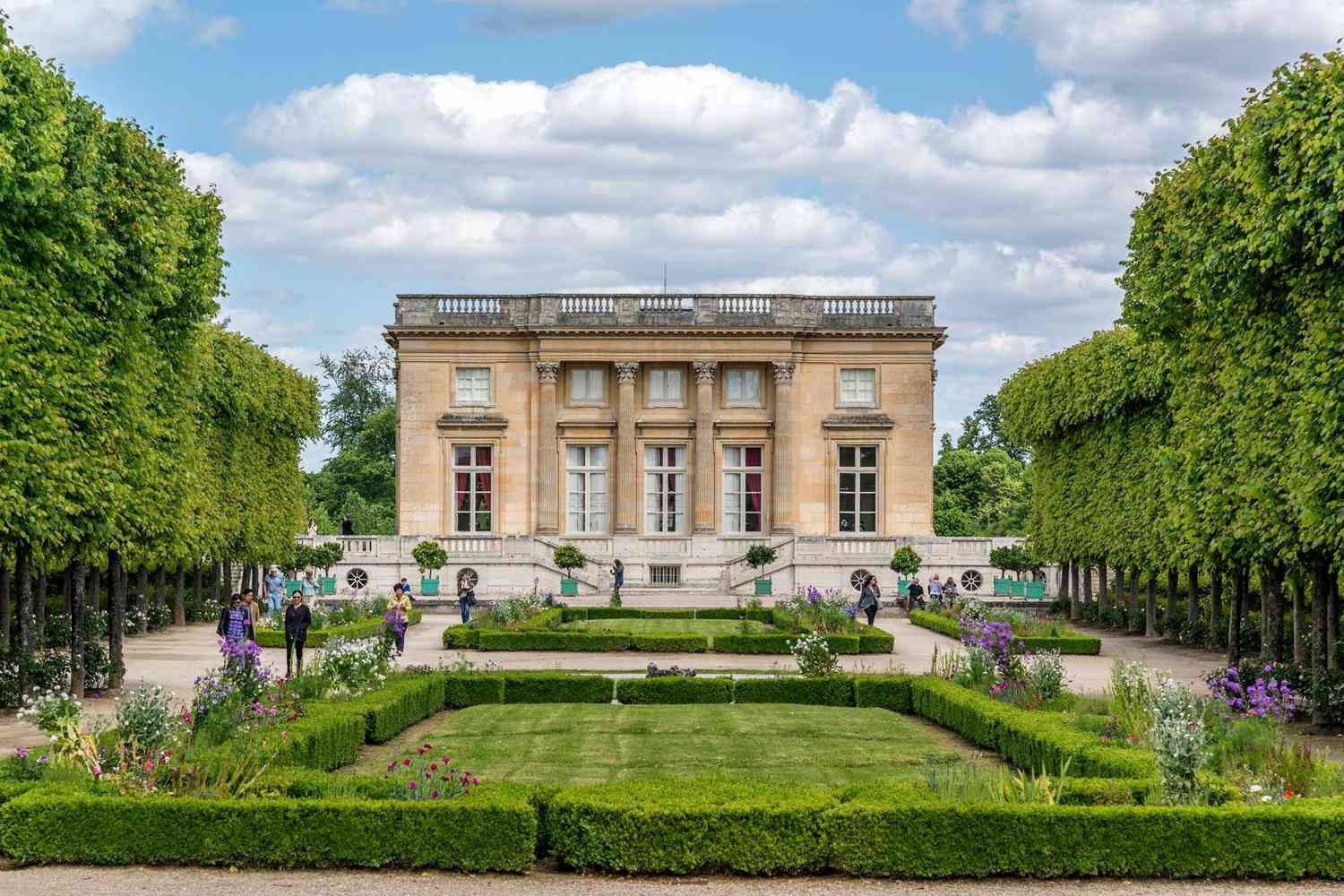France’s Palace of Versailles was built to leave visitors in awe. It wasn’t just the massive scale, the endless marble, or the stunning frescoes that amazed 17th-century guests (and still dazzle eight million visitors every year). The gardens, too, were a display of Louis XIV’s dominance, showcasing the meticulous artistry that made André Le Nôtre’s jardin à la française—the French formal garden—the envy of Europe.
Yet less than 700 feet from the palace, the Queen’s Grove stood in quiet defiance of Le Nôtre’s rigid symmetry. Here, Marie-Antoinette brought together the finest botanists, architects, and gardeners to craft a private escape from the strict etiquette and watchful eyes of the royal court.
A Hidden Sanctuary Reborn
While Le Nôtre’s grand, orderly designs set the scene for lavish parties and fireworks-lit celebrations, the grove was a retreat—a place to slip behind a veil of leaves. Framed by dense woods, the rectangular plot borrowed from the wild charm of English gardens. Winding paths, edged with shrubs, led to shaded arbors and flower-lined walkways dotted with benches for quiet moments.
The grove endured for over 200 years—until 1999, when Storm Lothar, one of France’s worst tempests, ravaged Versailles’ gardens, toppling 53 trees in the Queen’s Grove. After years of research and fundraising, a two-year restoration (completed last summer) has brought the grove back to life, replanting it with the same exotic species Marie-Antoinette once cherished.
A Window Into the Age of Exploration
Strolling through the grove today feels like stepping into the 18th century, when naturalists sailed the globe in search of rare plants. These expeditions weren’t just about trade routes or colonial expansion—they were quests to unravel nature’s secrets during the Enlightenment. The Queen’s Grove became a living showcase of these discoveries, its collection of rare plants capturing the spirit of the era.
“The Queen’s Grove is unlike anything else at Versailles,” says Véronique Ciampini, the gardens’ operations manager, who led the restoration. “Back then, the English landscape garden was a radical departure from Versailles’ formality. Marie-Antoinette fell in love with this style—it reflected Rousseau’s philosophy, emphasizing emotion and harmony with nature. This was Versailles’ first garden that truly celebrated plants.”
From Royal Labyrinth to Botanical Haven
Originally, the site held a labyrinth of fountains depicting creatures from Aesop’s fables, commissioned by Louis XIV to teach his son. But upkeep proved too costly, and by the 1770s, Marie-Antoinette saw her chance to remake the five-acre space in her own vision.
Her team, led by architect Michel-Barthélemy Hazon, drew inspiration from exotic plants gathered on global voyages. Seeds were nurtured at Versailles, both in the Trianon and the Queen’s Grove, transforming it into a living museum of biodiversity. The grove was designed as a series of open-air “rooms,” each dedicated to a different species.
Marie-Antoinette’s horticulturists—Abbé Nolin and André Thouin—exchanged seeds and expertise with leading botanists worldwide. The grove’s Judas tree came from the Middle East; its cherry trees, from Japan. From the Americas—then the height of fashion—arrived white fringe, Virginia sumac, chokecherry, and catalpa trees.
The Queen’s Favorite Tree
The Virginia tulip poplar quickly became Marie-Antoinette’s favorite, taking pride of place in the central clearing where she gathered with her inner circle. “It first arrived at Versailles in 1732,” Ciampini explains. “People marveled at its towering potential and its huge, tulip-shaped blooms—unusually grand for an ornamental tree.” The grove flourished just as planned. In 1824, writer Alexis Donnet praised it as “the most beautiful known arbor of tulip poplars.”
“These plants weren’t just picked for their origins,” Ciampini adds. “Their beauty and fragrance mattered too. That was revolutionary—Le Nôtre’s gardens were all greenery, sculptures, and fountains. Flowers barely had a role.”
A Floral Obsession
Marie-Antoinette adored flowers. Alongside her notorious sweet tooth and lavish wardrobe (she reportedly ordered 170 dresses a year, earning her the nickname “Madame Deficit”), she was obsessed with roses. Her collection drew admirers from across the globe.
Piecing Together the Past
To restore the grove accurately, historians combed through archives. Letters from 1775 detailed its design—Thouin emphasized “artistic variety in tree shapes, leaf textures, flower colors, and bloom times.” The comte d’Angiviller described winding paths through ornamental shrubs, sometimes straight, sometimes curved. Even plant orders from 18th-century gardeners helped guide the restoration.
“It was like detective work,” says Ciampini. “Plant names changed over time—the tulip poplar, for instance, was once called ‘white wood’ or ‘yellow wood,’ terms borrowed from Native American languages by early explorers.”
Bringing the Grove Back to Life
A team of gardeners replanted 650 trees (21 species), 6,000 flowering shrubs (46 varieties), 147 tulip poplars (each sponsored by donors), and 600 rose bushes. Since many of Marie-Antoinette’s roses are now extinct, they selected 38 varieties matching her taste—delicate hues, lush petals, and rich scents.
A few survivors from the 18th century still stand, including three tulip poplars and a majestic Corsican Laricio pine. These are part of Versailles’ “Admirable Trees” trail, which visitors can explore with a free audio guide.
A Refuge—and a Downfall
Though the grove offered Marie-Antoinette peace, it also played a role in her undoing. In 1784, a scandal unfolded here—the infamous “Affair of the Diamond Necklace.” A disgraced cardinal, hoping to regain the queen’s favor, met a fraudster posing as Marie-Antoinette in the grove. The plot led to the purchase of a wildly expensive necklace, which was later stolen and sold off. When the scheme unraveled, the queen’s reputation never recovered, fueling public anger that helped topple the monarchy.
Yet before her forced departure in 1789, the grove remained her sanctuary. Behind its wrought-iron gates, she wandered winding paths amid a lush tangle of plants—a world away from courtly constraints.
“This garden was meant to stir the senses with every season,” says Ciampini. “Today, we hope visitors feel that same wonder.”
